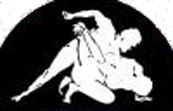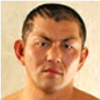
|
||||||||||||||||||||||
|---|---|---|---|---|---|---|---|---|---|---|---|---|---|---|---|---|---|---|---|---|---|---|

UWF Main Roster
Newborn UWF Main Roster
Universal Wrestling Federation History The first Japanese promotion based solely on the shoot-style of wrestling, the Universal Wrestling Federation (UWF) was founded in 1984 by Akira Maeda. Maeda, a New Japan wrestler at the time, had a different vision for professional wrestling promotion that had a more realistic style with a focus on submissions and strikes. With many other New Japan wrestlers going with him, UWF started with promise. Unfortunately, Maeda would clash with Satoru Sayama and in 1986 the promotion was disbanded. After returning to New Japan, in 1987 the promotion was started again by Maeda, but this time with Takada as his primary foil. The second attempt at UWF lasted until 1990, when the promotion would dissolve and the wrestlers would spread in different directions to continue the shoot-style movement. In 1984, things were changing in Japan. IWE had closed on 1981, with its wrestlers joining different promotions. New Japan and All Japan were the only two wrestling promotions in Japan at the time, and with the number of upcoming stars in both promotions there wasn't room for everybody. One such star was a young Akira Maeda, who had debuted in 1978 and by 1984 was ready for the main event. But he wasn't put there at the speed he wanted, as after his return from an excursion he was still stuck in the mid-card for the majority of the cards. With Rusher Kimura, Ryuma Go, Mach Hayato, and Gran Hamada originally and Yoshiaki Fujiwara, Nobuhiko Takada, Satoru Sayama, and Kazuo Yamazaki later, Maeda split from New Japan and created UWF. When the promotion first started their style was similar to that of New Japan and All Japan, but with Maeda, Takada, and Sayama all wanting to do a more realistic style based on strikes and submissions the promotion changed into the shoot-style that UWF is known for today. UWF had its first event in April of 1984. The promotion drew well, but with no steady television slot they were not able to grow to close the size of New Japan or All Japan. Problems backstage started in 1985, as Maeda and Sayama began arguing about the direction the promotion should take. Maeda wanted a more submission-oriented style and Sayama wanted a more strike-based style due to his background in kickboxing. They feud came to a boiling point when in late 1985 during a match Maeda gave Sayama a "shoot" kick to the groin. Soon afterwards, Sayama would leave the promotion, which with his attitude backstage wasn't a problem with the other UWF wrestlers. But the promotion continued to flounder without television and now without one of their stars, and they would close their doors in 1986. After UWF closed, Maeda went back to New Japan a top level star, leading other UWF roster members in a feud with New Japan as they tried to take over the promotion. The feud drew incredibly well, and influenced many other "takeover" feuds over the years, including the nWo angle in WCW. But Maeda was still a loose cannon and was still unhappy in New Japan. In 1986, he had an issue with Andre the Giant during an infamous match, when Maeda refused to sell for Andre which lead to Andre laying on his back, daring Maeda to pin him. Maeda knew his boundaries and kept his distance, but Inoki had to run down and put an end to the match. The final straw came on November 19th, 1987, when during a tag match Maeda would give Choshu a "shoot" kick to the face, breaking his orbital bone. Soon after, Maeda was suspended from New Japan. Tired of the backstage politics and wrestling style of New Japan, Maeda would re-group his old UWF wrestlers and take another stab at a shoot-style promotion. Now with Nobuhiko Takada as his other primary drawing power, Maeda led a new collection of shoot-style wrestlers as he tried to make the promotion work the second time around. This time he was joined by Yamazaki, Yoji Anjo, and Tatsuo Nakano from New Japan. Later, he would gain Fujiwara along with some of the brightest young stars of shoot-style: Masakatsu Funaki, Minoru Suzuki, Masahito Kakihara, Yusuke Fuke, and Kiyoshi Tamura. UWF's style changed in 1990, as the promotion switched to a points system instead of the typical pins/submissions finishes. Points were awarded for submissions and strikes, with the first wrestler to get five points being the winner. Things were looking up for the promotion, but unfortunately backstage problems again got in the way. One of the problems when many different factions get together to form one promotion is that different factions tend to want to run the promotion their own way, and that was the main downfall of UWF. Specifically, in the UWF Takada, Maeda, and Fujiwara all had their own disciples and ideas for the promotion. One of the main clashes was that some of the wrestlers (and the promoter) wanted to do inter-promotional cards but Maeda refused to. The promotion wasn't strong enough to survive, especially with the Japanese economy suffering, and without doing inter-promotional cards they weren't able to make a profit. Not able to reach a compromise, the promotion would have their final card on December 1st, 1990, lasting less then two years. Here was the 2nd UWF's last card: - Kiyoshi Tamura defeated Masahito Kakihara in 14:58 by TKO Combined, the first and second UWF only lasted for four years, but their impact on the sport was immense. First of all, it helped spread the idea that shoot-style could succeed as a promotion, and after UWF split up three more shoot-style promotions were started in its place (Maeda in RINGS, Fujiwara in Fujiwara Gumi, and Takada in UWFI). Also, while before shoot-style was something mostly done by Inoki in his matches, by 1990 shoot-style was an accepted form of professional wrestling that other promotions had begun incorporating into their own promotion. And finally, the birth of UWF helped give us some of the biggest stars not only of shoot-style, but professional wrestling in general. If Minoru Suzuki, Kakihara, Tamura, and Masakatsu Funaki hadn't been in a promotion that solely focused on shoot-style, who knows if they ever would have been able to fully grow their skills in the way that they would to help them become stars in Japan. While UWFI would become the most famous shoot-style promotion, the original and 2nd UWF were the most important as they helped create one of the hottest feuds in wrestling history in New Japan during the mid-80s and they paved the way for all future shoot-style promotions. |
||||||||||||||||||||||
|
















